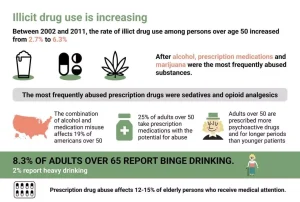Sober Living vs Halfway House: What’s the Difference?
Some sober living homes offer scholarships or sliding scale fees based on income, making them more affordable for those with limited financial resources. There are also sober living homes tailored to specific age groups, professions, or individuals with co-occurring mental health conditions. These homes often incorporate specialized support addressing issues like trauma, self-esteem, and relationships.
Regular drug testing and the community’s encouragement provide extra layers of accountability, further protecting your sobriety. Living among individuals who understand your struggles and can relate to your experiences creates an invaluable support network. This sense of community encourages mutual support, where residents motivate and inspire each other to stay committed to their recovery goals. Sober living homes are more than just a place to stay; they’re communities committed to supporting individuals in their pursuit of a substance-free life.
Embracing these benefits, you’ll find that sober living homes offer much more than just a place to stay. They furnish you with the tools, support, and structure needed to build a solid foundation for your recovery journey. Sober living homes are structured environments designed to foster recovery and maintain sobriety.
- Though they might seem similar, there are essential distinctions between the two.
- Regular drug testing and the community’s encouragement provide extra layers of accountability, further protecting your sobriety.
- There are also sober living homes tailored to specific age groups, professions, or individuals with co-occurring mental health conditions.
- Choosing the right home can make a big difference by offering the customized support needed for a successful recovery journey.
- As such, sober living houses serve as a space to transition into a life without addiction, developing tools and community while getting used to the demands of daily life.
Sober living homes provide a safe, trigger-free space so residents can stay focused on their recovery. Inpatient or residential rehab offers intensive, 24/7 medical and therapeutic care. Sober living homes, on the other hand, provide a more relaxed level of support for people who have completed rehab or are further along in their recovery journey. Many people are discovering that sober living homes are a great resource for bridging the gap between structured treatment and independent living. Some are run by private companies, others by nonprofit groups, and some even by former residents.
- Unlike the unpredictable environments you might find outside, these homes establish a routine and rules that foster a safe space for recovery.
- Some insurance plans may cover some of the cost of sober living, but residents often pay out of pocket.
- Most homestays will cost between $500 to $1,200 monthly, with all services included.
- However, sober living houses are not covered under insurance since they do not provide treatment services and thus aren’t considered rehabilitative facilities.
- Sober living homes provide a bridge between rehabilitation and returning to the world with a stronger foundation for your sobriety.
How Long Can You Stay in a Sober-Living House?
Women-only houses tend to focus on providing mental health support for their residents. Substance abuse may have taken years of your life, so sober living homes can help you regain them. The time spent in a sober-living home depends on a number of factors including strength of recovery from addiction, progress on clinical milestones and the personal living situation at home. A minimum stay of three months is recommended, but many benefit from a longer stay for sustained sobriety. By Julia Childs Heyl, MSWJulia https://northiowatoday.com/2025/01/27/sober-house-rules-what-you-should-know-before-moving-in/ Childs Heyl, MSW, is a clinical social worker and writer.
Online Therapy Can Help
Going to a sober living house has been proven to support sobriety efforts, with results ranging from a decreased amount of relapses to long-term sobriety. Most residents of these homes have recently completed an inpatient or outpatient treatment program. If you or someone you know has recently quit drinking alcohol and is now sober—congratulations, quitting alcohol can be a long and difficult process. However, you might be wondering what happens now that the detox is over, you’ve completed your stay at an addiction treatment center, and it is time to go home. Sober living homes are not just about providing a roof over your head; they foster a sense of belonging and mutual support. Here, you’ll find individuals at various stages of their recovery, each contributing to a collective reservoir of hope, strength, and encouragement.
- These are residential facilities that provide structure and support for those healing from addiction.
- These homes aren’t just about staying substance-free; they’re about learning how to live a fulfilling life in sobriety.
- Sober living homes share the same core principles, but they can come in different types to cater to various needs and demographics.
- Women-only houses tend to focus on providing mental health support for their residents.
- How long you stay depends on the sober-living facility and your progress in recovery.
Addiction can be isolating, but in sober living homes, you are surrounded by individuals who understand the struggles and challenges that come with recovery. This shared experience fosters strong bonds and support networks that are invaluable during tough times. Sober living homes often offer resources and a conducive atmosphere to help residents develop essential life skills such as budgeting, job readiness, and healthy communication. These skills are crucial for maintaining sobriety and building a successful life after recovery.
Sober Living Houses
This structure helps you build discipline and accountability, key components for a sober life. sober house In sober living homes, residents follow rules, such as adherence to sobriety, participation in household chores, and attendance at group meetings. These rules are not just guidelines but essential structures that help maintain the path to recovery.
Moreover, the structured environment helps to gradually reintroduce you to the challenges and stressors of daily life, but in a way that doesn’t overwhelm you. How long you stay depends on the sober-living facility and your progress in recovery. Some sober-living facilities are only offered for as long as you are in the treatment program. For others, you can remain in a sober-living environment after treatment is completed. After World War II, groups like Alcoholics Anonymous (AA) began to develop across the country. These organizations created 12-step houses that offered an alcohol or drug-free living space while also encouraging attendance at AA meetings.
Recovery Programs
Anyone who has ever experienced addiction can attest that recovery is not a walk in the park. The journey to full sobriety normally goes beyond the initial treatment phase. For many individuals battling addiction, transitioning back into daily life can pose significant challenges. Reputable sober living spaces will often have “house rules” that residents are expected to follow. These can range from regular chores to safety and privacy provisions such as separate bathrooms for different genders.
Recovery is possible! Take the first step towards a new life today.
They’re often in recovery themselves, offering unique insights and empathy based on personal experiences. Sober living is a crucial step in this journey, offering a bridge between an inpatient facility and the real world. It’s a safe space where you can reinforce the coping skills needed to navigate life without substances. People who have undergone addiction treatment in rehab centers often struggle to stay sober as they adjust to the real world. In sober living homes, you can learn essential skills and techniques for recovering addicts before returning to your everyday life. Sober living is just like it sounds, a place to stay where you’ll have a supportive community and can start your new life free from alcohol or other drugs.
Strict enforcement of these rules ensures a stable environment where you can focus on your recovery without external pressures or temptations. Halfway houses are very similar to other sober-living residences, and it’s no surprise that people often confuse them. John C. Umhau, MD, MPH, CPE is board-certified in addiction medicine and preventative medicine.
There are also plenty of independent sober living houses that have not changed their protocols much since the late 1940s when these residences came to be. Often the structure and routine of treatment programs help keep folks sober, and risking the loss of that when completing the program can be a threat to your recovery. Gender-specific sober living homes are especially popular because they help people avoid the distractions of romantic relationships, which can sometimes take the focus off recovery. Sharing experiences, offering advice, and supporting each other makes the journey less lonely and more encouraging. While some may include a focus on substance abuse recovery, they aren’t always specifically designed for that purpose. Sober transitional living spaces like sober homes can help you by limiting your access to drugs and alcohol.










.jpg)
.jpg)